HARRY BERTOIA (1915-1978)

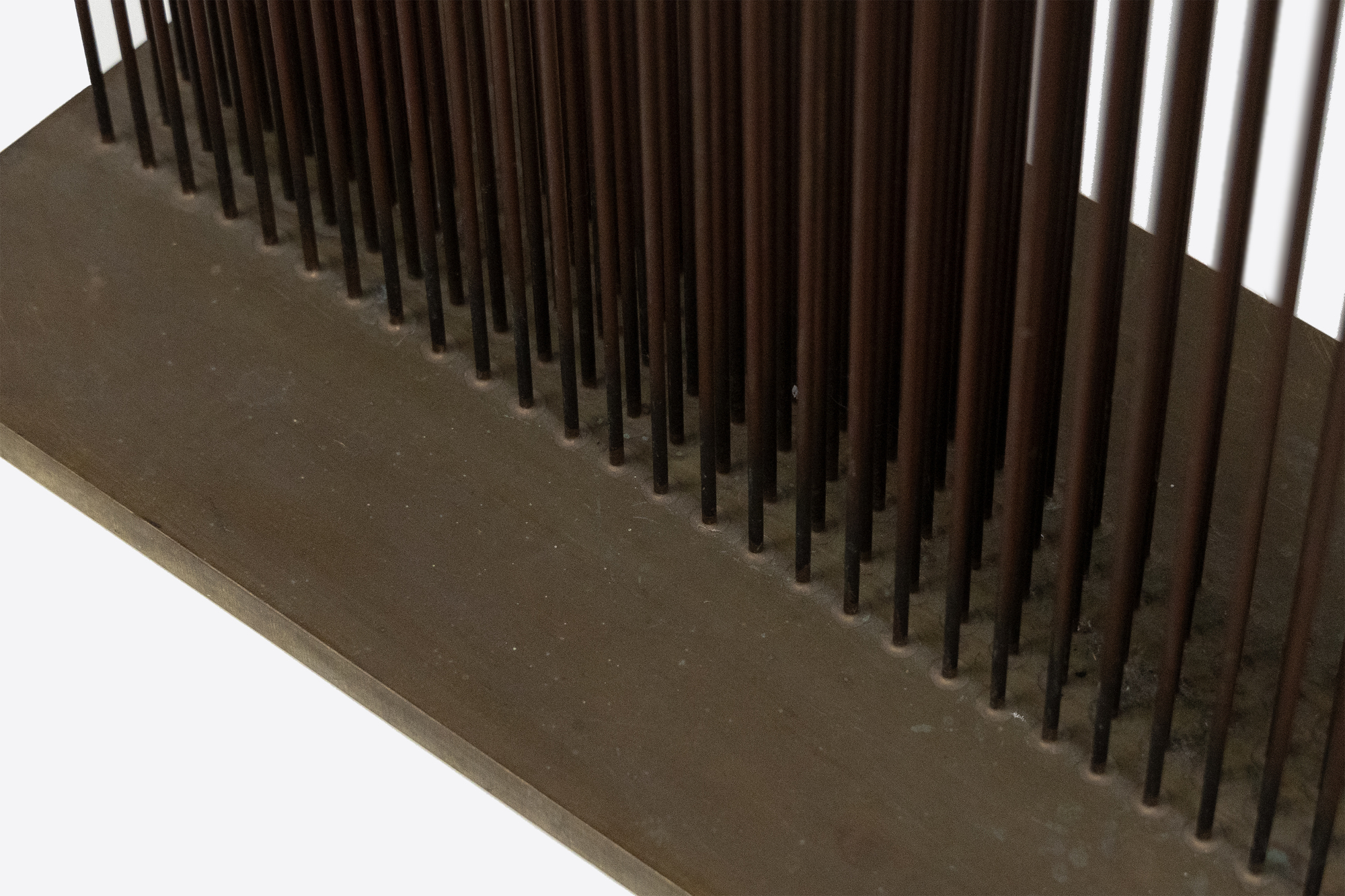
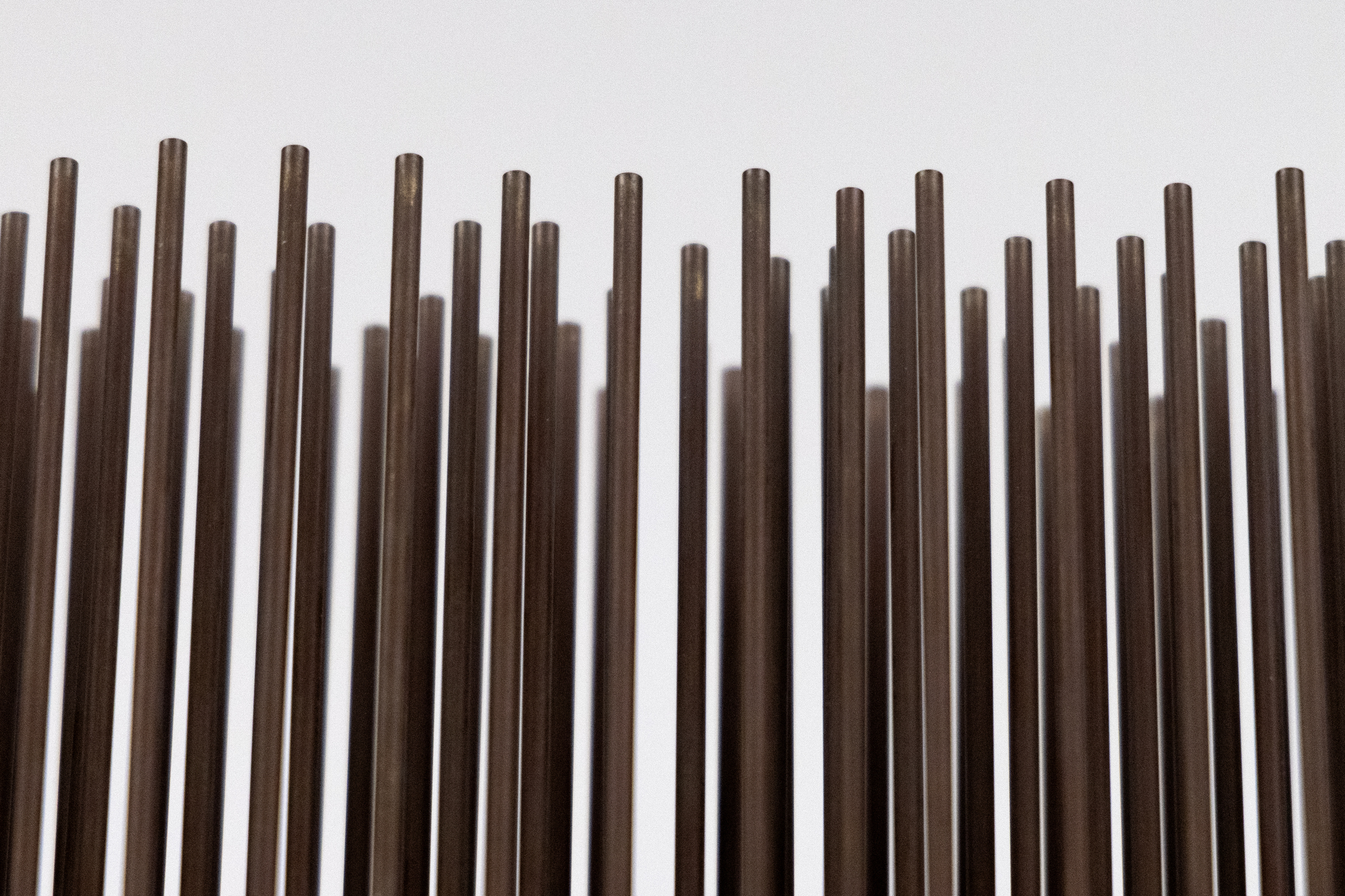
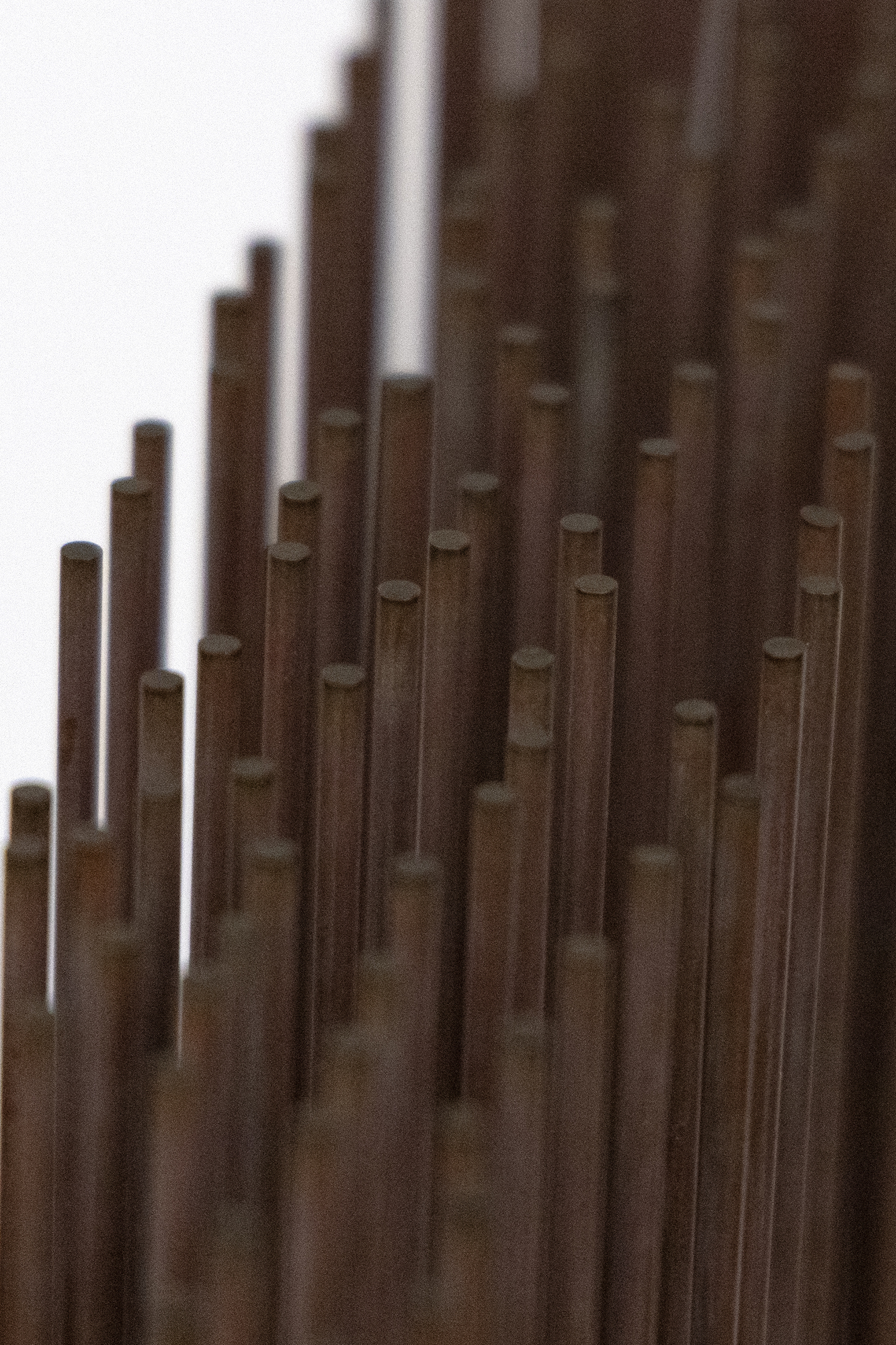
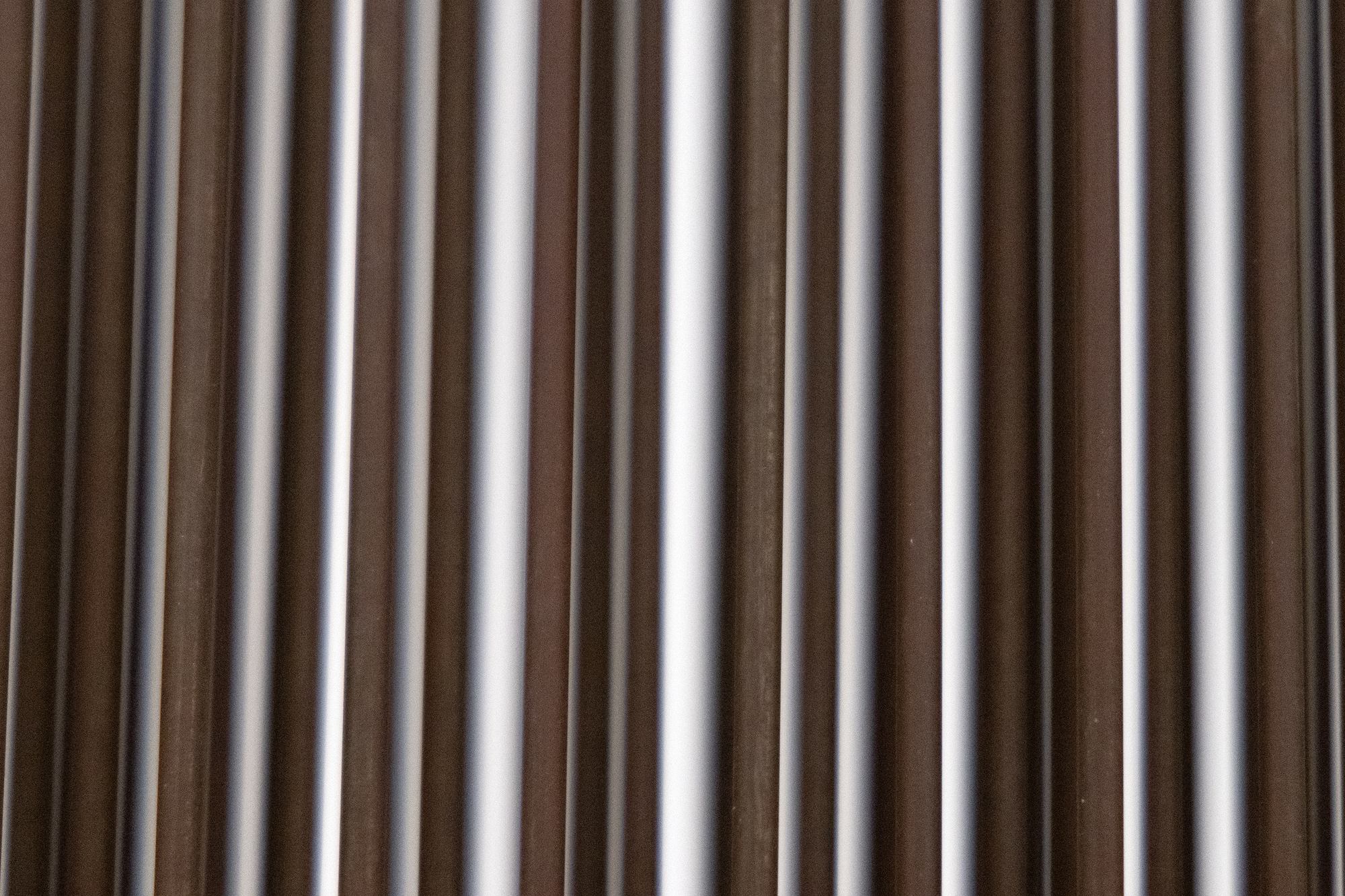
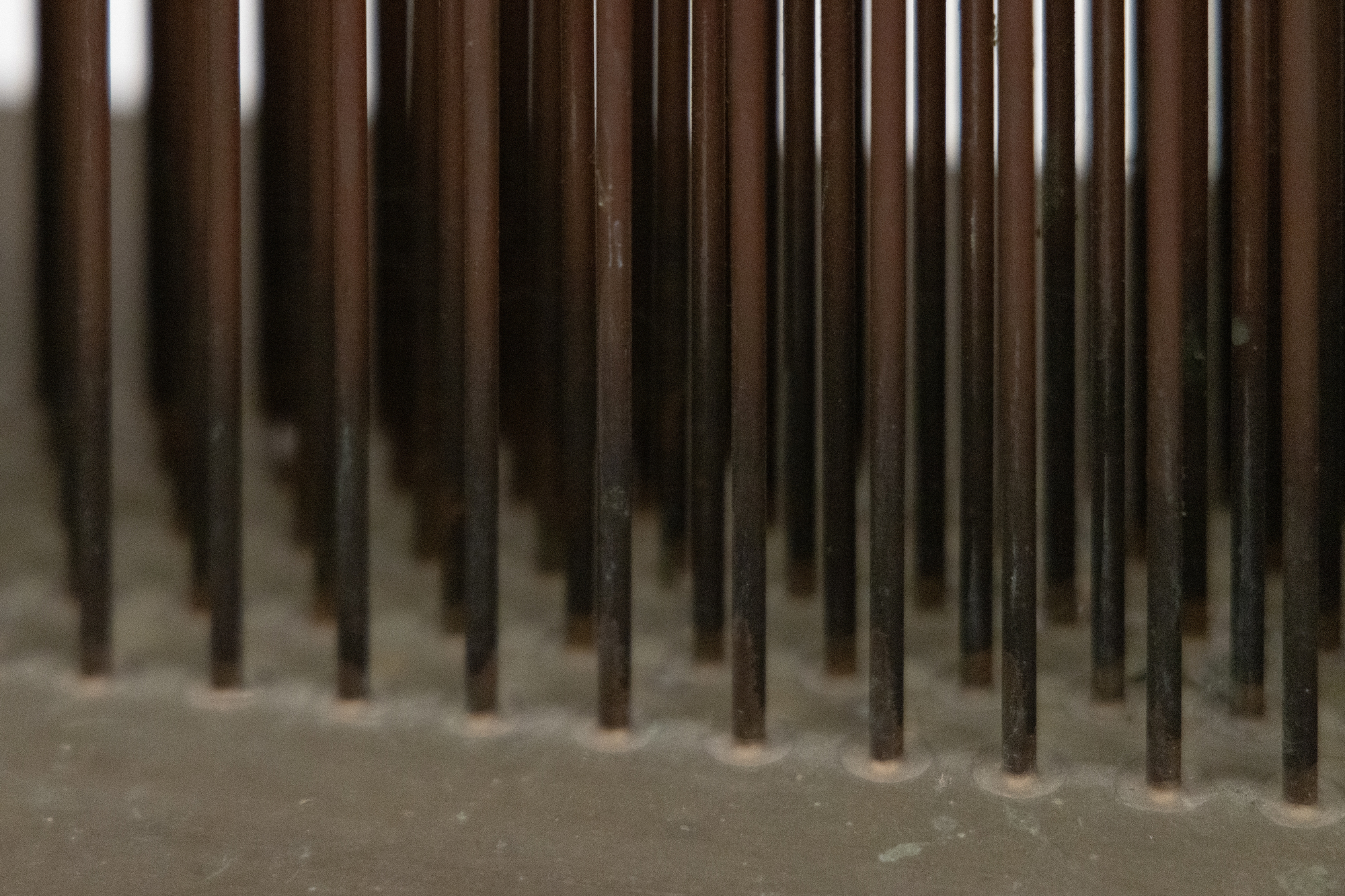
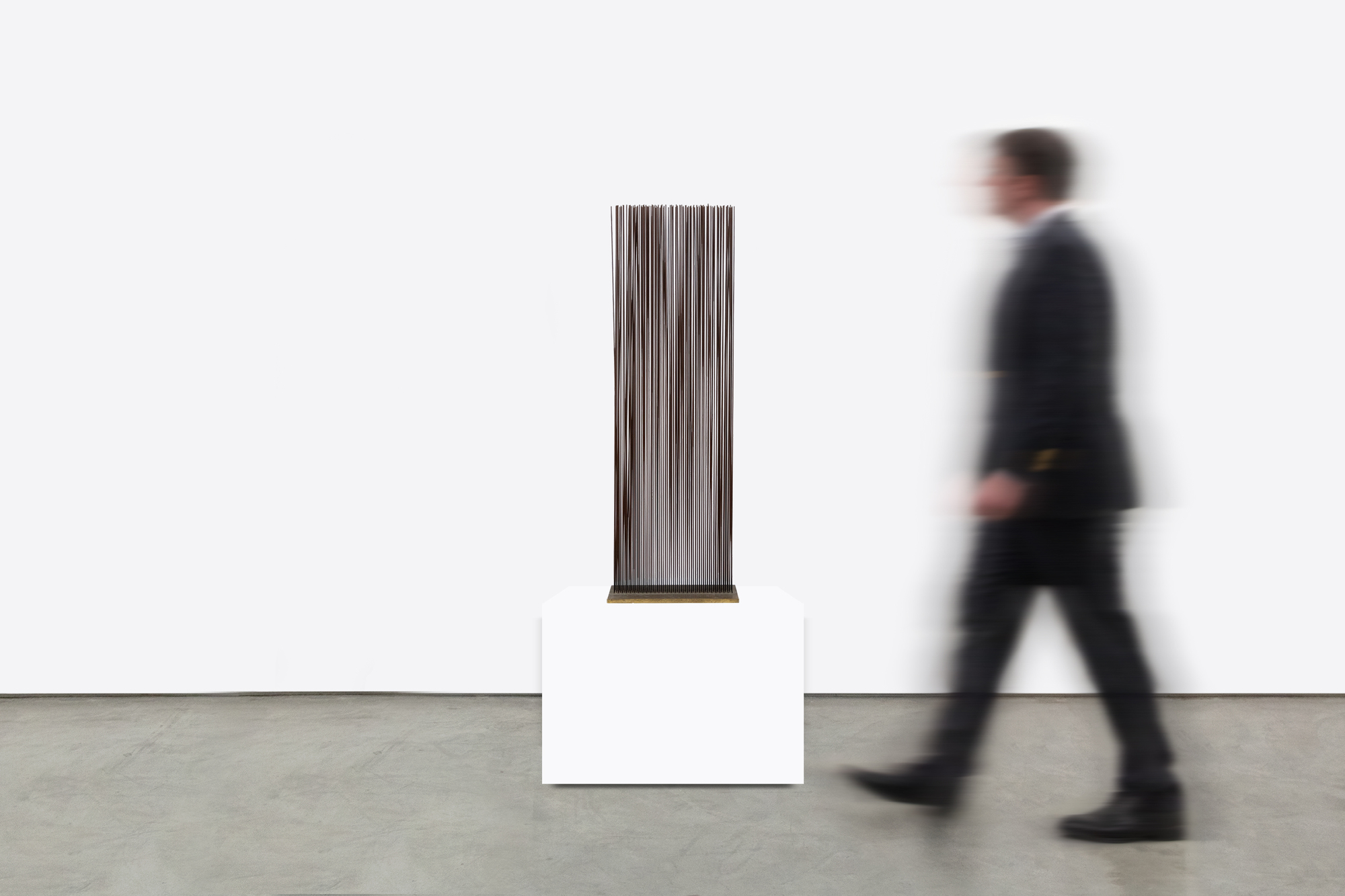
Procedencia
Colección privadaLa actual escultura "Sonambient" es una cortina de púas finas de cuarenta y ocho pulgadas de alto. Una vez activada, se convierte en un muro de sonido de 15 3/4 pulgadas de largo y 8 pulgadas de profundidad. Cinco filas de púas estrechas se escalonan en número, alternando entre 30 y 29 púas que, al activarse, se presentan como un muro ondulante de sonido. Al tocarlas o moverlas con las corrientes de aire, las varillas producen un sonido que, aunque metálico, no traiciona su fuente de inspiración: la serena conexión que Bertoia sintió al observar el suave movimiento ondulante de las hierbas del desierto. Como siempre, se trata de una escultura Bertoia que invita a participar en la experiencia de formas y sonidos cambiantes, una obra participativa que nos pide estar presentes en el momento, conectar a través del tiempo con el objeto y su creador.


